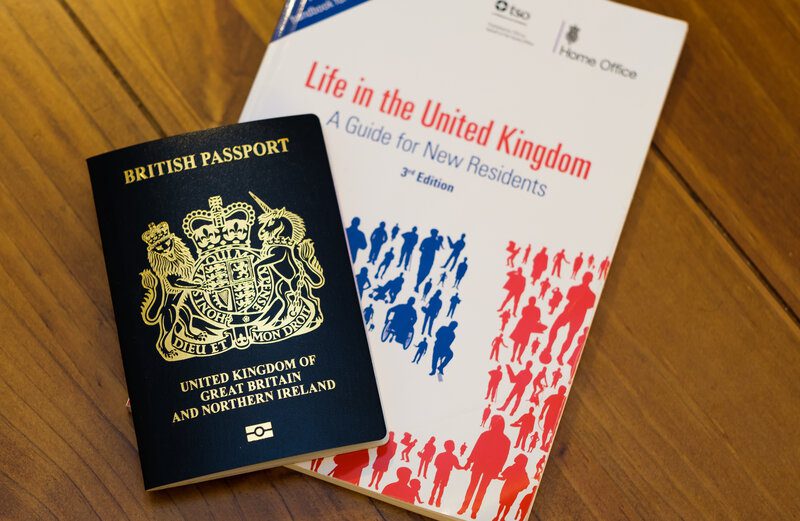The Life in the UK Test is a fundamental requirement for individuals seeking to settle in the United Kingdom permanently or to become British citizens. Established by the UK government, this test is designed to evaluate applicants’ knowledge of British history, traditions, culture, laws, and everyday life. This article provides a deep and thorough examination of the test, its origins, content, preparation methods, and contemporary relevance.
Origins and Purpose of the Life in the UK Test
Introduced under the Nationality, Immigration and Asylum Act 2002, the Life in the UK Test was first implemented as a requirement for naturalisation from November 1, 2005, and for settlement applications starting April 2, 2007. The test rose out of a policy aim to ensure that immigrants integrate well and develop a sufficient understanding of British values and society, facilitating social cohesion and mutual respect.
The government appointed the “Life in the United Kingdom Advisory Group,” chaired by Sir Bernard Crick, to design the test content and methodology. Their 2003 report titled “The New and the Old” laid out recommendations, though some suggestions were modified or abandoned by the government.
Initially, applicants could substitute the test with an “ESOL with Citizenship” course for fulfilling knowledge requirements. However, since 2013, applicants must both pass the Life in the UK Test and demonstrate competency in English at B1 or higher level (or equivalent qualifications) to meet eligibility criteria for settlement and citizenship. Knowledge of Welsh or Scottish Gaelic is also legally recognized under certain conditions, with rare accommodations made for test-takers wishing to take the test in these minority languages.
Test Format and Content
The Life in the UK Test is a timed, computer-based exam consisting of 24 multiple-choice questions, administered at numerous authorized test centers across the UK. Candidates have 45 minutes to answer all questions and must achieve a score of 75% (at least 18 correct answers) to pass.
The questions are carefully selected from an official handbook, currently titled Life in the United Kingdom: A Guide for New Residents. The handbook covers a broad range of topics, including:
- The values and principles of the UK (e.g., democracy, rule of law, individual liberty)
- Geography and political structure of the UK, including devolved governments (e.g., Scottish Parliament, Welsh Senedd)
- British history from ancient to modern times, emphasizing key events and figures
- Law and government, citizens’ rights and responsibilities
- UK society, customs, and everyday systems like healthcare, education, housing, and employment
- Cultural diversity, religious tolerance, and social cohesion
Importantly, candidates receive localized versions of the test depending on their residence within the UK—for example, questions about the Scottish Parliament for Scottish residents or Welsh-specific content for those in Wales.
The test content has evolved through several editions to reflect societal changes and public feedback, expanding from primarily England-focused details to include all nations of the UK articulated in a balanced and accessible manner.
Booking Process and Test Day Requirements
Applicants must book the Life in the UK Test online at least three days in advance through the official UK government portal. The exam fee is £50. Booking requires:
- A valid email address
- Payment method (debit or credit card)
- Accepted photographic identification, such as a passport or biometric residence permit
The name on the booking must exactly match the name on the ID used at the test center. Candidates are reminded that failure to present valid ID or refusal to have an on-site photo taken will result in denial of entry with no refund.
Over 30 test centers across the UK accommodate the test, including in major cities like London, Birmingham, Manchester, Glasgow, and smaller regional towns, making it broadly accessible. Accommodations for disabilities or special requirements are available upon request during booking, including additional time, assistive devices, or accessible venues.
Certain applicants do not need to take the test, including those under 18 or over 65 years old, those with long-term physical or mental disabilities who provide medical evidence, or those who have already passed the test as part of a previous application.
Preparation Strategies and Resources
Success in the Life in the UK Test relies heavily on thorough preparation. The official study materials and guidance are vital:
- The Life in the United Kingdom: A Guide for New Residents official handbook is the primary resource. It is available in print, eBook, and audio formats.
- The UK government offers an official Life in the UK Test app providing practice questions and interactive learning.
- Numerous third-party websites offer mock exams and additional study materials, simulating the exam environment and helping candidates gauge their readiness.
- Study groups and community classes on UK citizenship are often available in local community centers or online.
Candidates are strongly advised to study all chapters carefully since the test questions are directly drawn from the official handbook’s content. Particular attention should be paid to chapters on the UK’s political structure, history, laws, and social customs, alongside essential facts about daily life such as healthcare, education, and the economy.
Time management during the exam is crucial to complete all 24 questions within the 45-minute limit. Practice tests can help build confidence and familiarity with the question format.
Pass Rates and Demographics
Data from testing between 2005 and 2009 shows an average pass rate of about 70.9%, with variation by applicants’ country of origin. For instance, immigrants from Australia, Canada, New Zealand, and the United States generally surpass a 95% pass rate, reflecting linguistic and cultural proximity.
Conversely, pass rates for candidates from countries such as Iraq, Bangladesh, Afghanistan, and Turkey tended to be below 50%, highlighting potential challenges with language and cultural adaptation. Indian applicants, the largest nationality group, had an average pass rate of 79.2% in this period.
More recent data from 2010 to 2014 indicates pass rates around 75.17%, though the introduction of new materials in 2013 temporarily lowered successful outcomes to approximately 70%. EU nationals display steadily high pass rates averaging 86%, with some variability by country.
Candidates are not informed of exact scores but receive a pass notification letter upon success, which must be retained for application purposes. There is no limit to the number of attempts, but fees apply per test booked.
Criticism and Controversy
The Life in the UK Test has sparked debate in academic and public spheres. Critics argue the test sometimes emphasizes trivial knowledge or historical minutiae not expected from native-born citizens.
The first edition of the study handbook faced harsh reviews for factual inaccuracies and a style described as dry or tedious. Scholars and journalists have questioned whether the test effectively stimulates integration or instead fosters anxiety.
A 2013 report titled “The Life in the United Kingdom Citizenship Test: Is It Unfit for Purpose?” highlighted issues like an overemphasis on obscure trivia, inconsistent questions, and perceived gender bias. The debate continues on how to balance knowledge assessment with inclusivity and fairness.
Language inclusivity remains a concern, especially for minoritized language speakers. While provisions exist for Scottish Gaelic and Welsh, Irish speakers and other minorities have noted unequal treatment in test availability.
Conclusion
The Life in the UK Test represents a key milestone in the path toward British citizenship and settlement, symbolizing both a practical knowledge checkpoint and a cultural integration tool. While demanding, the test encourages aspiring residents and citizens to learn about the UK’s values, history, and societal structures, helping new members contribute fully to British life. With ample preparation using official materials and practice resources, candidates can confidently approach this civilizational welcome mat and take the next step in establishing their British identity.



























